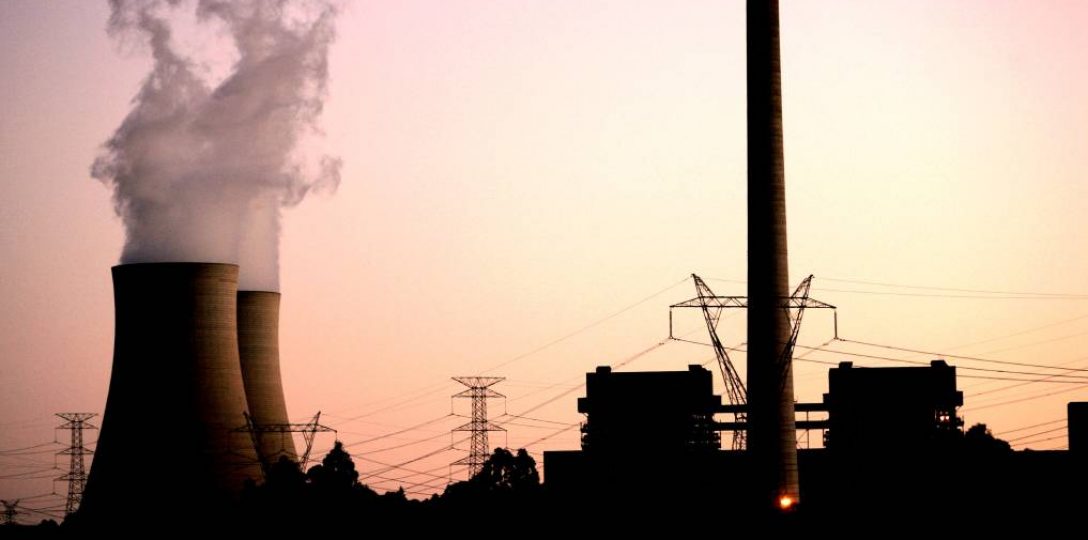Muswellbrook Council joins leading university-led program to deploy localised air quality sensors

AIR QUALITY: The Bayswater Power Station near Muswellbrook. Picture: Jonathan Carroll
Muswellbrook Shire Council will join 12 other local councils in a university-led research program launched today exploring the best ways to combat air quality issues.
The Operational Network of Air Quality Impact Resources (OPENAIR) program will see the NSW Government partner with the councils, small businesses and five universities based in Sydney and the ACT to use smart sensors to develop solutions for air quality issues.
Muswellbrook Shire Council general manager Fiona Plesman said the project would help the council collect better data on air quality around Muswellbrook.
“Council will deploy low-cost air sensors in various locations around Muswellbrook to supplement existing air quality monitoring so that we can gain a deeper understanding of what the real air quality issues are, times of day the air quality is worse and where poor air quality hot spots are,” Ms Plesman said.
“We will use this data to make representations to the state and federal governments for funding for better air quality compliance campaigns and health programs.
“We will share live air quality data with residents and hope to get a schools program for monitoring air quality up and running.”
Ms Plesman said the council could only currently regulate air quality in relation to wood smoke from chimneys and having the extra data may “encourage better compliance programs” from the NSW Government.
A recent Australian Conservation Foundation analysis of the National Pollution Inventory found, when combined with coal mining emissions, that Muswellbrook is the nation’s third most polluted postcode behind Mt Isa in Queensland and Newman in Western Australia.
The Australian Institute of Health and Welfare has estimated that about 3000 deaths, equivalent to about 28,000 years of life lost, are attributable to urban air pollution in Australia each year.
Matthew Riley, the director of climate and atmospheric science at the NSW Department of Planning and Environment said the project would create a best practice methodology for different air quality issues faced by local governments in communities like Muswellbrook.
“The primary objective is to develop informational resources that councils can use to solve their air quality issues,” Mr Riley said.
“Eventually, this will result in an information hub enabling the data to be shared with the broader community.”
Mr Riley said the Department is working with participating councils and researchers from the NSW Smart Sensing Network (NSSN) member universities to implement low-cost sensors to provide additional localised air quality information to the public, supplementing data captured by the NSW air quality monitoring network.
Professor Jason Prior from the The University of Technology Sydney (UTS) Institute for Sustainable Futures said the collaborative approach to the OPENAIR project is key to its success.
“Working with local councils and small businesses means that our research will consider their needs and experiences, ensuring that the resources we design will be truly useful to them,” Professor Prior said.
NSSN Co-Director Professor Benjamin Eggleton said the project will be led by a multidisciplinary group of researchers from UTS, Australian National University, University of Sydney, University of New South Wales and the University of Western Sydney.
“The project builds on the Network’s strong capability in air quality research, which has been built up since the early days of NSSN,” Professor Eggleton said.
“We have seen a national shift in understanding the importance of air quality on health; with strong support from our university, government and industry partners, this project will make a significant inroad towards solving local air quality issues for each of the participating councils.”
OPENAIR is a $2.4 million air quality monitoring research and development program led by the NSW Department of Planning and Environment (DPE) in collaboration with the NSW Smart Sensing Network (NSSN).
The program has received a $1.78 million contribution from NSW Government through the $45 million Smart Places Acceleration Program, which is part of the Digital Restart Fund.
The 13 councils participating in the OPENAIR program include Hawkesbury Council, Lake Macquarie Council, Muswellbrook Council, Newcastle City Council, Northern Beaches Council, Orange Council, Parramatta City Council, Ryde Council, Sunshine Coast Council, Sutherland Council, Tweed Council, Wollondilly Council and Wollongong Council.
This article was originally published by the Hunter Valley News on 28 June 2022.